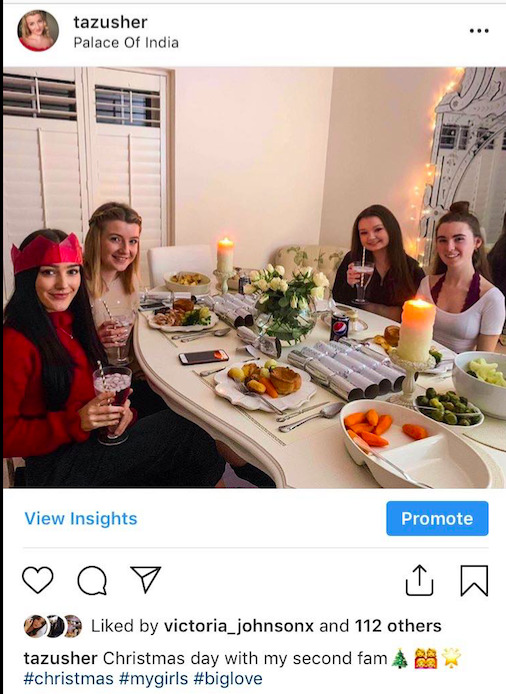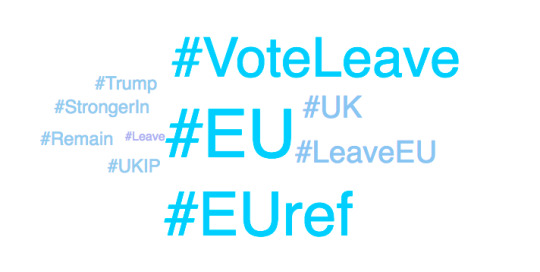#stopislamization
Photo

#diversity #diversitymatters #multiculturalism #stopislamization #pjnet #rednation #rednationrising
2 notes
·
View notes
Text
El mundo debe exijir que facebook y demás redes sociales censuren todo Anti semitismo de los musulmanes contra Israel 🇮🇱 ✌️ no más Cristofobia contra los Católicos ✌️ tolerancia ✌️
1 note
·
View note
Photo

Passez vos commandes Snap: girrard_a Telegram: critoma #ParisNice #allezparis #Ligue1 #ChampionsLeague #Barcelone #ParisSaintGermain #mbappe #Barca #nissan #parisestmagique #paris #parisnow #architecture #Foodie #Food #parisportif #PSGbarca #AllahAkbar #Ramadan#StopIslam#IslamHorsdEurope#IslamHorsdeFrance#Terrorisme #rambouillet #Marseille #LOSC #shit #cocaine #drogue (à Îles De France, (à Ile-de-France, France) https://www.instagram.com/p/CPO0E1uMre4/?utm_medium=tumblr
#parisnice#allezparis#ligue1#championsleague#barcelone#parissaintgermain#mbappe#barca#nissan#parisestmagique#paris#parisnow#architecture#foodie#food#parisportif#psgbarca#allahakbar#ramadan#stopislam#islamhorsdeurope#islamhorsdefrance#terrorisme#rambouillet#marseille#losc#shit#cocaine#drogue
2 notes
·
View notes
Photo

A COuPLE OF BirDS
2017
7 notes
·
View notes
Photo

God bless America #America #Iraq #war #Soleimani #Baghdad #stopIslam #Iran #stopmuslims #stopimmigration #freedom #Abendland #Christianity #tradition #freedom #identity #sovereignity #Christentum #starspangledbanner #flag #picoftheday #igers #values https://www.instagram.com/p/B62nEwHo0ZQ/?igshid=6j63lw88w2j5
#america#iraq#war#soleimani#baghdad#stopislam#iran#stopmuslims#stopimmigration#freedom#abendland#christianity#tradition#identity#sovereignity#christentum#starspangledbanner#flag#picoftheday#igers#values
0 notes
Text




Una mattina (metaforicamente)
Mi son svegliato e ho trovato l'invasor...
#StopInvasione #StopIslam #PortiChiusi #25aprile
44 notes
·
View notes
Text
To Hashtag or not to Hashtag?
Is it Progression?

For 10 years now, the hashtag has been a symbol of both unity and division: with hashtags such as #MeToo and #BlackLivesMatter making breakthroughs for equality, #JeSuisCharlie and #machesterattack igniting emotional responses to terrorist attacks, and #brexit causing a huge political divide in Britain. Whoever you are, however many followers you have, with the use of a hashtag, you can both start and contribute to conversations.
The influential and popular hashtag was first championed by social media platform Twitter in 2009 when it established a filter system allowing users to search for tweets on the basis of hashtags. Consequently, the internet saw the rise of the hashtag as a method of categorising data on the basis of interests, topics, and opinions; also known as ‘Collective Intelligence’.
So, why has the hashtag gained so much prominence in the study of digital literacies?
Amongst the many symbols found on our keyboard, the hashtag is unique owing to its ability to convert the data of the online world into information which is relevant to each of us. Examples of which can be seen on the social media applications Twitter, Instagram, Pinterest and Tumblr where users’ extensive classification of the platforms’ data using hashtags, has developed a system shaped by the interests and opinions of real people. A system also referred to as a folksonomy.
However, whilst the authenticity of this system seems ideal for such digital communities which are largely user-led, there has been much controversy as to whether the hashtag is the best means of communication; and whether the restrictions (constraints) of using this symbol, outweigh its benefits (affordances). Notably, writer Cory Doctorow (2001) argues that collective tagging has three constraints; all of which I explore below:
1) People are untruthful when tagging
2) People are careless when tagging
3) People tag incompetently
Hashtagging to form identities
One of the most harmless forms of hashtagging is that used in personal posts. For example, I use hashtags in my own Twitter and Instagram posts to add information to my posts which go beyond what the Tweet and Image captions state. For example, in a recent photo that I shared of my friends and I at our annual christmas get together, I hashtagged #christmas, #mygirls and #biglove; all of which were personal comments which, had I elaborated on these comments, would have resulted in a quite soppy and amusing post! These hashtags therefore enabled me to establish an identity which demonstrated my care for my friends as well as my enjoyment of the festive season.

Alternatively, hashtags can also be misleading when used in this way, especially when they are used sarcastically. For example, someone might use the hashtags #lovinglife #travels #paradise at the end of a sarcastic post displaying their congested commute to work on a Monday morning. These hashtags, although used to create an identity which evokes humour, are misleading and demonstrate Doctorow’s 1st constraint. This would be particularly evident if another user used the same hashtags to search for utopian holiday destinations: the result would certainly not satisfy.
Hashtagging to debate
Nowadays, the most widely used form of hash tagging is that to contribute and ignite debate. For example, if I wanted to access updates on the latest progression of the Brexit campaign, I could search #brexit on Twitter, and immediately find updates on the campaign, as well as members of the public’s opinions. Similarly, if I wanted to narrow down my search results to receive posts related to the Leave argument only, I could search both #brexit and #leave to find tweets using both. Using multiple hashtags on Twitter can have a huge advantage for those wanting to voice their opinion. Additionally, it is also important for users to know which hashtags are trending in order to reach a wider audience. For example, the below tag cloud display the most used Brexit-related hashtags on Twitter, many of which are used collectively to extend their reach.

On the other hand, the use of hashtags to spark debate can occasionally be harmful to others and result in harassment and offence. Notably, #stopislam has been used by many extremists as an attack against the entire Muslim community. Such uses as these are a constraint of the digital tool which demonstrates the users’ carelessness and irrationality.
Hashtagging for engagement
Another common use of the hashtag is to boost engagement with digital content: commonly used in the business industry. Hashtagging is a great way for businesses to capture the interests of their target audiences, as well as reaching out to individuals who might be less likely to see their advert in a magazine or on TV. However, once again, this type of hash tagging takes skill and knowledge to receive a successful result; a skill which has become a focal point of market research.
Whilst there are some constraints of hashtagging, it is very clear that the affordances have provided users of the internet with abilities which are a progression from what we could previously do. However, next time you hashtag: THINK. Is it relevant? Is it true? Is it harmless? If so, post ahead!
Referenced sources:
Cover Image: Retrieved from: https://www.lyfemarketing.com/blog/social-media-hashtags/
Doctorow, C (2001). Metacrap: Putting the torch to seven straw-men of the meta-utopia. Retrieved from: https://people.well.com/user/doctorow/metacrap.htm#2 on January 22, 2019.
15 notes
·
View notes
Text
España exije el fin de la violencia de los musulmanes venidos de África 😠 no es racismo sino defensa de la vida de nuestros niños ���️ no más Cristofobia del Islam contra los Católicos
0 notes
Photo

ACHTUNG TEILEN-- #eswirdzeitfürafd werbung #merkelmussweg #cdu #stopislam #sachsen #Deutschland #wirsinddasvolk #polizei #dresden #chemnitz #news #2019 #bayern #noasyl #afd #Asylanten #politik #sachsenanhalt #fuckantifa #nachrichten #pegida #berlin #dielinke #fckantifa #bayern #spd #gelbwesten #yellowvest #revolution #german #artikel13 Visit more: https://ift.tt/2FRG6mI
1 note
·
View note
Video
#politics #trump2020 #trump2020🇺🇸 #republicans #conservatives #conservativememes #republicanmemes #freespeech #freedomofspeech #stopthebias #godandcountry #trumpsupporters #trumpsupporter #politicalmemes #politicalmeme #teamamerica #finishthewall #blackrepublicans #kag #countryboys #africanamerican #africanamericans #wwg1wga #buildthewall #blexit #maga #unity #stopislamization https://www.instagram.com/p/BwZhFkeAWvW/?utm_source=ig_tumblr_share&igshid=1roka83n02hic
#politics#trump2020#trump2020🇺🇸#republicans#conservatives#conservativememes#republicanmemes#freespeech#freedomofspeech#stopthebias#godandcountry#trumpsupporters#trumpsupporter#politicalmemes#politicalmeme#teamamerica#finishthewall#blackrepublicans#kag#countryboys#africanamerican#africanamericans#wwg1wga#buildthewall#blexit#maga#unity#stopislamization
1 note
·
View note
Photo

#stopIslam #StopMerkel #StopEU #StopJuncker #Stopgenocide #Whitegenocide #Bruxelles #Politik #Folketinget #Trump #NigelFarage yes to #Brexit
#stopeu#bruxelles#whitegenocide#trump#stopislam#brexit#politik#stopgenocide#nigelfarage#stopjuncker#stopmerkel#folketinget
0 notes
Text
Ilegal imigration IS the problem
And i don't mean citizens off of differwnt countires that are willing to adapt to a countires that they've come in culture. Don't believe me? Check any countries that took a lager amount of imirants from middle east countries in, crime report maps and compare them with imigration growth and see the corelation. Literally the moment the imigrants from mostly muslim countries get in the crime rate begins to rise. Mostly gang rape and/or general violence And all the ledtist governments do is tuck their tail inbetween their legs and act like their countires culture should adapt to the imigrants who are not willing to accept resistance from the patriots as an answer
#stopislam #notosharia #adaptorgetout
4 notes
·
View notes
Text
#stopislam

BEFORE YOU READ THIS, and for those who claim “this never happened.”
Sainsbury’s Crawly West Sussex. 12th October 2010 11:30am
Manager: Mr Cawdrey.
Tel: 01293616433
.
.
An incident occurred in a supermarket recently when the following was witnessed:
A Muslim woman dressed in a Burkha (a black gown & face mask) was standing with her shopping in a queue at the checkout. When it was her turn to be served ,…
View On WordPress
0 notes
Text
Milestone - 3 (22.04.2020)
Writing paper
So far, I completed all sections of my research paper. After the feedback given by my advisor, I reformed the section of introduction part by citing the official resources for the statistics related to refugees. Later on, I fixed the all problems and rectified all deficiencies related to the APA paper format style. Secondly, I completed the section of literature review. In doing so, I added important theoretical studies done about the portrayal of refugees in the context of hashtag activism (Rettberg & Gajjala, 2016; Kreis, 2017; Barisione, Michailidou & Airoldi, 2017; Siapera Boudourides, Lenis & Suiter, 2018). Furthermore, last week, drawing upon the feedback of my principal advisor, I reviewed some articles about the important hashtag movements in Turkey (Eslen-Ziya, 2013; Akyel, 2014; Yılmaz, 2015).
In methodology section, based on the feedback and theoretical resource (Akşak, 2019) given by my principal advisor, I determined the theoretical dimension of my methodology. I decided to analyze the collected data according to critical dicourse analysis. Based on feedback of final jury which is held last semester, I created my research questions. This time I decided to narrow the scope of my approach down. To put it another way, last semester I was planning to focus on social, economic and political motives behind the anti-refugee and pro-refugee discourse, this semester I decided to restrict the scope of my analysis with social motives.
By taking the feedback of my principle advisor, instructor and last semester’s final jury into consideration, I tried to give a detailed analysis of the discourse of political elites and non-governmental organizations in a comparative way. By translating the collected tweets into Turkish, I tried to analyze them according to the theory of critical discourse analysis. By the way, critical discourse analysis is the most relevant theory for my cases (#ülkemdesuriyeliistemiyorum and #SuriyelilerKardesimizdir) because I analyze rhetorics of tweets. Critical discourse analysis is an interdisciplinary method that primarily deals with social problems and political issues like ideology, race, gender, class, interests, institutions social order and social structure (Tannen, Hamilton & Schiffrin, 2017, p. 466-479). In the section of conclusion I emphasized that what make my study unique in this area and explained how it contributes to the literature of hashtag activism. Lastly, I wrote the section of abstract and I stated my main argument there.
When it comes to the my proposal, I revised and improved the sections such as; summary, description of project, background research and annotated bibliography, form of project, abstract, writing sample and outline. I did all these revision after completing my research paper. Since I narrowed the theoretical approach down in my research paper I omitted some concepts. In the section of background research and annotated bibliography, I added new articles about hashtag activism I used in my research paper. Secondly, since I recollected data based on the feedback of last semester’s final jury, I substantially changed the section of form of the project. Moreover, completing my research paper led to a significant change in parts such as writing sample, outline, abstract and references as well. Lastly, I made a short video which tells the story of what I did so far.
As for what I did this week, I draw two bar charts based on the feedback of my principal advisor for my research paper. By drawing these two bar charts, I compared the number of retweets and likes in Sinan Oğan’s and Süleyman Soylu. My aim was to illuminate the influence of right-wing discourse and reveal the differences and similarities between two distinct kinds of right-wing discourses. In doing so, I aimed to contribute to the formation and reinforcement of my main argument and the conclusion. These are my bar charts (Figure 1 and Figure 2):


Reading the research material
Since the subject of my research paper is connected to the notion of Islamophobia, I read two articles that both implicity and explicitly addresses to right-wing policy and discourse. The first one is about the movement of #stopIslam which emerged after 2016 Brussels terrorist attack. This study analyzes key tactics used by right-wing actors, self-identified muslim users, would-be allies and celebrities in usage of discourse(Poole, Giraud & Quincey, 2020, p. 1-24). Another study focuses on the movement of #MuslimWomensDay on Twitter. Until now, in Western mainstream media, Muslim women were portrayed in a negative way. Based on the analysis of approximately 300 tweets, this study argues that Twitter can be a useful space for women to tell their narratives and raise their voices (Pennington, 2018, p. 199-211). Both of these articles analyzes usage of right-wing discourse in the context of hashtag activism by comparing narrative and counter-narrative practices. In these works, right-wing discourse is on the side of hostility but in my case the right-wing discourse is seen both in the pactices of support and hostility towards suppressed groups. Again, the contribution of my study to the literature of hashtag activism is discernible in this point.
References
Akşak, E. Ö. (2019). Discursive construction of Syrian refugees in shaping international public opinion: Turkey’s public diplomacy efforts. Discourse & Communication, 175048131989376. doi: 10.1177/1750481319893769
Akyel, E. (2014). #Direnkahkaha (ResistLaughter): “Laughter is a Revolutionary Action.” Feminist Media Studies, 14(6), 1093–1094. doi: 10.1080/14680777.2014.975437
Barisione, M., Michailidou, A., & Airoldi, M. (2017). Understanding a digital movement of opinion: the case of #RefugeesWelcome. Information, Communication & Society, 22(8), 1145–1164. doi: 10.1080/1369118x.2017.1410204
Eslen-Ziya, H. (2013). Social Media and Turkish Feminism: New resources for social activism. Feminist Media Studies, 13(5), 860–870. doi: 10.1080/14680777.2013.838369
Pennington, R. (2018). Making Space in Social Media: #MuslimWomensDay in Twitter. Journal of Communication Inquiry, 42(3), 199–217. doi: 10.1177/0196859918768797
Poole, E., Giraud, E. H., & Quincey, E. D. (2020). Tactical interventions in online hate speech: The case of #stopIslam. New Media & Society, 146144482090331. doi: 10.1177/1461444820903319
Rettberg, J. W., & Gajjala, R. (2016). Terrorists or cowards: negative portrayals of male Syrian refugees in social media. Feminist Media Studies, 16(1), 178–181. doi: 10.1080/14680777.2016.1120493
Siapera, E., Boudourides, M., Lenis, S., & Suiter, J. (2018). Refugees and Network Publics on Twitter: Networked Framing, Affect, and Capture. Social Media Society, 4(1), 205630511876443. doi: 10.1177/2056305118764437
Tannen, D., Hamilton, H. E., & Schiffrin, D. (2015). The handbook of discourse analysis. Malden, MA: John Wiley & Sons, Inc.
Yılmaz, B. (2015). Yeni Medya Ortamlarında Örgütlenme ve Toplumsal Etkileri: #sendeanlat Örnek Olay İncelemesi. Ulusal ve Kurumsal Çatışmalar/Çözümler Kongresi.
NOTE: THIS IS AN HOMEWORK FOR BILKENT UNIVERSITY!
0 notes
Photo

Passez vos commandes Snap: girrard_a Telegram: critoma #ParisNice #allezparis #Ligue1 #ChampionsLeague #Barcelone #ParisSaintGermain #mbappe #Barca #nissan #parisestmagique #paris #parisnow #architecture #Foodie #Food #parisportif #PSGbarca #AllahAkbar #Ramadan#StopIslam#IslamHorsdEurope#IslamHorsdeFrance#Terrorisme #rambouillet #Marseille #LOSC #shit #cocaine #drogue (à Îles De France, Paris (France)) https://www.instagram.com/p/COpeiUhrmWx/?igshid=duyxg6g749tc
#parisnice#allezparis#ligue1#championsleague#barcelone#parissaintgermain#mbappe#barca#nissan#parisestmagique#paris#parisnow#architecture#foodie#food#parisportif#psgbarca#allahakbar#ramadan#stopislam#islamhorsdeurope#islamhorsdefrance#terrorisme#rambouillet#marseille#losc#shit#cocaine#drogue
1 note
·
View note
